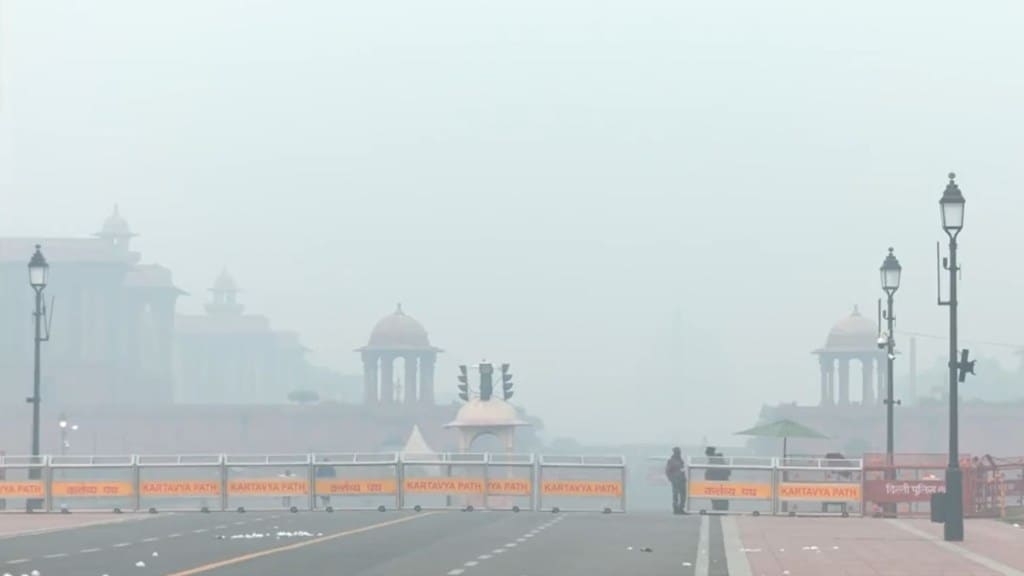The air quality in Delhi-NCR significantly deteriorated on Monday, falling into the ‘Poor’ category, according to the Central Pollution Control Board. Delhi roads were seen covered in thick haze post-Diwali celebrations despite restrictions imposed on firecrackers by the Supreme Court and the Delhi government.
In the wee hours of Monday, ‘poor’ air quality was observed around the Lodhi Road area at 5:54 am and the Rajghat area at 6:05 am, as per the CPCB. Additionally, firecracker waste was seen in various places post-Diwali celebrations.
Also Read:Delhi Pollution: Air quality improves further, but still in ‘poor’ category
Visuals from various parts of Delhi showed thick haze covering the roads, drastically reducing visibility to mere hundreds of metres. Delhi received a breather from deteriorating air quality for the past weeks following a wet spell before Diwali.
According to the CPCB, the Air Quality Index (AQI) in various parts of Delhi, recorded at 8 am, is as follows: Shadipur and Anand Vihar AQI fall under the very poor category, with readings of 321 and 312, respectively. The AQI at Wazirpur, ITO, Burari Crossing, and Anand Vihar all fall under the poor category, with 281, 263, 279, and 296 readings, respectively.
Also Read:‘God heard prayers of people and intervened, no thanks to govt’: Supreme Court after Delhi rains
As per the CPCB data, on November 12, the AQI in Anand Vihar was at 266, while at RK Puram it was recorded at 241 on Sunday morning at 07.00 am. Similarly, in the Punjabi Bagh area, it was at 233, and in the ITO area, it was recorded at 227.
Air Quality Index (AQI) readings in many areas surged to ‘severe’ levels, persisting in a toxic state for days. Post-Diwali, a renewed surge in pollution is highly anticipated, posing respiratory challenges for city dwellers, as per ANI reports.
The Arvind Kejriwal-led AAP government recently enforced a complete ban on firecrackers. In response to the pollution emergency, the government even contemplated ‘artificial rain’ to combat the foul air, but unexpected rainfall provided substantial relief.
Also Read:Delhi Pollution: How do air pollutants affect your lungs
Regardless of the ‘Diya Jalao, Patakhe Nahi’ campaign by the Delhi government and the Supreme Court’s firecracker restrictions, social media posts and reports indicate widespread firecracker use in various locations. Visuals from Lodhi Road, RK Puram, Karol Bagh, and Punjabi Bagh on Sunday night showcased intense fireworks illuminating the capital’s sky.
Historical pollution data reveals that since late October, Delhi’s air quality has plummeted to its worst levels. PM 2.5 concentration has exceeded the World Health Organization’s limit by 20 times, prompting the closure of primary classes and truck entry restrictions.
Despite collaborative efforts, escalating pollution looms over the city after the festivities, jeopardizing the effectiveness of the ‘Diya Jalao, Patakhe Nahi’ initiative and the directives from the Supreme Court.
(With ANI Inputs)


 — ANI (@ANI)
— ANI (@ANI)